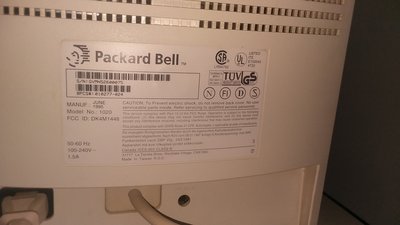First post, by athlon-power
- Rank
- Member
Just as I was heading to install MS-DOS on my 486, I noticed that, with a bright image, at typical "DOS resoultions," (the BIOS screen of the PC, scandisk, etc.) the horizontal edges of the screen move back and forth a couple of millimeters or so, but the center stays solid. The top and bottom edges of the drawn screen also stay still; it's only the horizontal edges of the drawn image. I can't tell if it does the same thing when the image is dark or not.
Let me address this one caveat first: If this is one of those "capacitor failure," scenarios, it's as good as dead. While I just did a whole bunch regarding the modification of that 486, changing out the capacitors in a CRT is a whole world of Hell I don't want to get into. The amount of complexity those things have on the insides would likely make that GeForce GTX 280 look like a cakewalk in comparison, among the dangers that if you don't drain the caps properly, you'll likely die while working on it.
Here's the issue: if this is a death scenario, I don't know how long it'll be before I can get a "new," one. It was just fine yesterday, but has now started this and I don't know if it's going to stop. I have a couple of other CRTs back at my old house, but those happen to be larger, heavier ones, especially my 19" Hyundai CRT, which, while great, is likely too big to bring with me. I don't have enough room for any more desks and I don't have any desks here that will support that ~50lb monstrosity. I have a smaller ~15" Gateway monitor, though I don't know if it works, how well it works, etc., and it is incredibly yellowed.
Where am I?
